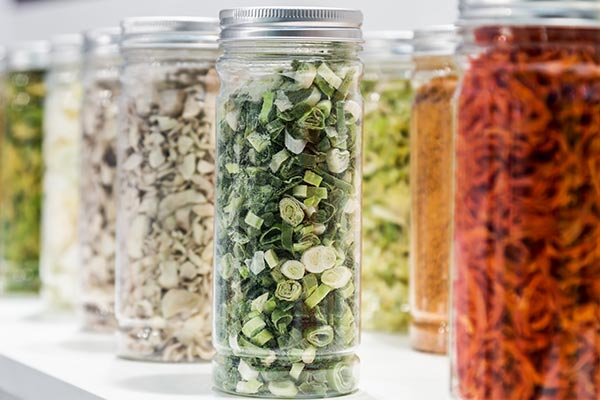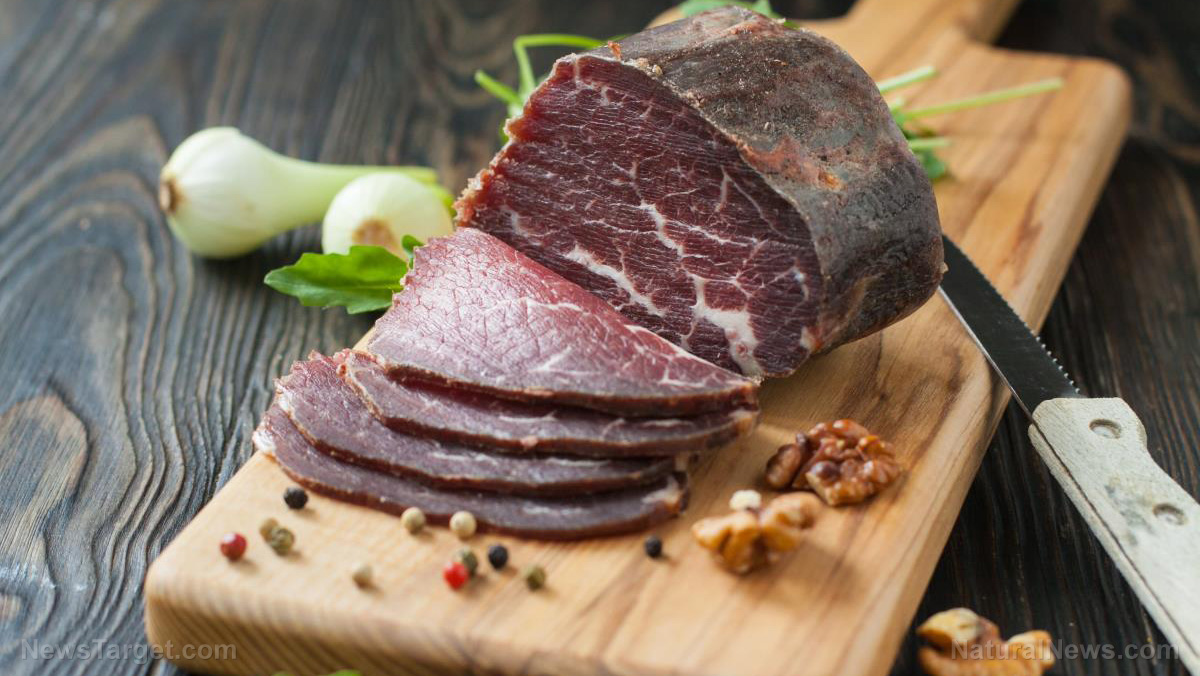
Freeze-drying is a food preservation method that involves freezing, primary drying and secondary drying. Freeze-dried foods have up to 99 percent less moisture than fresh foods yet retain most of the food's flavor.
Freeze-drying is technically called lyophilization. It is a three-step process that includes freezing, sublimation (primary drying) and desorption (secondary drying). It starts with freezing the food at an extremely low temperature, which is roughly -40 F. It is a rapid process that prevents the formation of ice crystals. (Related: Freeze-drying vs dehydration: Which is the best food preservation method?)
After freezing, the food undergoes the first drying phase. The food is packed in a bag, the air is vacuumed and heat is applied at low pressure. This step can take up to a few days and will retain only roughly five percent of the moisture in food.
The last process in freeze-drying is the water removal phase where any excess water that remains after the initial stage is removed. The food is again exposed to a high temperature at low pressure, with the final product having only one percent of the food's original moisture content.
According to a study that appeared in the journal Foods, freeze-drying is the best choice to dehydrate fruits and vegetables and if you want the final product to retain an optimized phytonutrient content. The only downside to freeze-dried foods is that they can be rather expensive.
Benefits of freeze-drying
The benefits of freeze-drying include:
Whole food nutrition
Freeze-drying allows you to preserve foods without compromising their nutritional value. According to a study that appeared in the journal Dietary Phytochemicals: Nutrition and Health, freeze-dried foods retain at least 97 percent of their original nutrient content, such as essential vitamins and minerals, as well as potent antioxidants and beneficial phytonutrients – much more than other drying techniques, such as air-drying and heat-drying, which usually damage micronutrients and phytonutrients, as easily seen by the large changes in the foods' colors.
All-natural food taste
Freeze-drying doesn't require the use of additives, synthetic chemicals or preservatives. It is a special form of drying that removes all moisture, stopping all enzymatic action and bacteria growth and also doesn't alter or affect the taste of foods, so you don't have to add flavor enhancers. Freeze-dried foods generally have better flavor and taste than dehydrated foods.
Appearance, texture and smell
In freeze-drying, food is frozen and placed in a strong vacuum. The water in the food, then sublimates (it turns straight from ice into water vapor or gas). Because of this unique and gentle process, the food's structure, taste, texture, smell and nutritional content are wholly retained.
Longer shelf life
Freeze-dried foods are considered to be "shelf stable" and have a shelf life of 15 to 30 years—a shelf life that other preservation methods cannot compare to. Freeze-dried foods remain fresh for longer periods because the process of freeze-drying removes up to 98 percent of the moisture (no more than five percent residual moisture), which significantly increases their shelf life, according to a study published in the journal Foods.
Portability and easy, space-saving storage
The process of freeze-drying food removes more than 80 percent of its water weight and it is up to about 90 percent lighter to carry and more compact than the original product. When stored and sealed in an airtight container with an oxygen absorber, they don't need to be refrigerated or stored in a freezer.
Convenience
Unlike dehydrated food, many freeze-dried super foods can be eaten dry as crispy chips. These dry chips can be eaten on their own as a nutritious snack or added to many different recipes to give meals a healthy unique twist.
How to store freeze-dried food properly
Storing your freeze-dried foods in mylar bags (easiest and least expensive option) with an oxygen absorber and then placing those in a hard plastic container or buckets with lids on a shelf in a cold, dark storage room or pantry will result in the longest shelf life.
Just keep in mind that:
- Storage containers, such as glass or Mason jars, vacuum seal bags and even buckets, let light in. It is important that you store them in a dark space, such as a storage room or closet as light can decrease shelf-life.
- Mylar bags, vacuum seal bags and plastic bags are susceptible to animals, rodents and pests. You can store them in totes or food-grade buckets with lids for extra protection.
Visit FoodStorage.news to learn more about other food preservation methods.
Watch the video below about the benefits of preserving food through freeze-drying.
This video is from the Health Ranger Store channel at Brighteon.com.
More related stories:
Prepper food: 12 ways to use freeze-dried pineapples.
Prepare for inflation-induced by stocking up on these essentials.
Food storage tips: how to make DIY dehydrated meals.
Sources include:
Please contact us for more information.
















